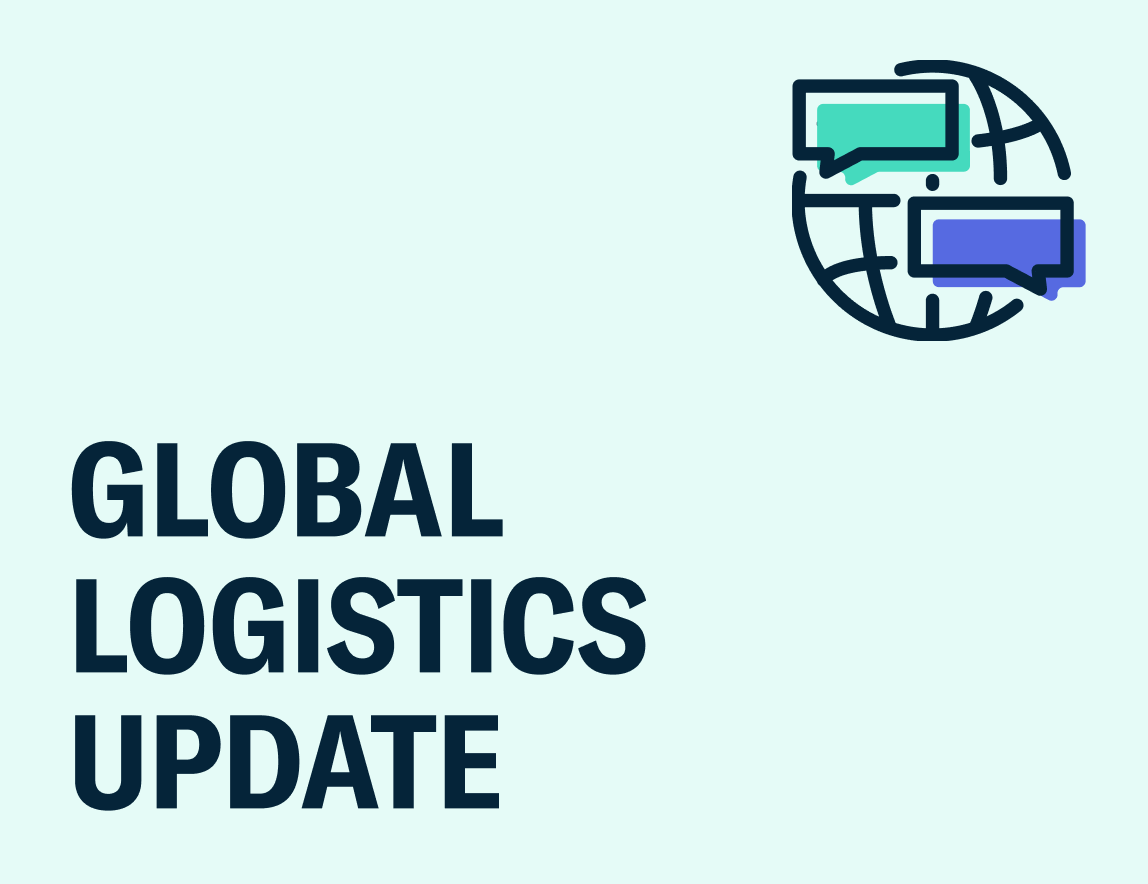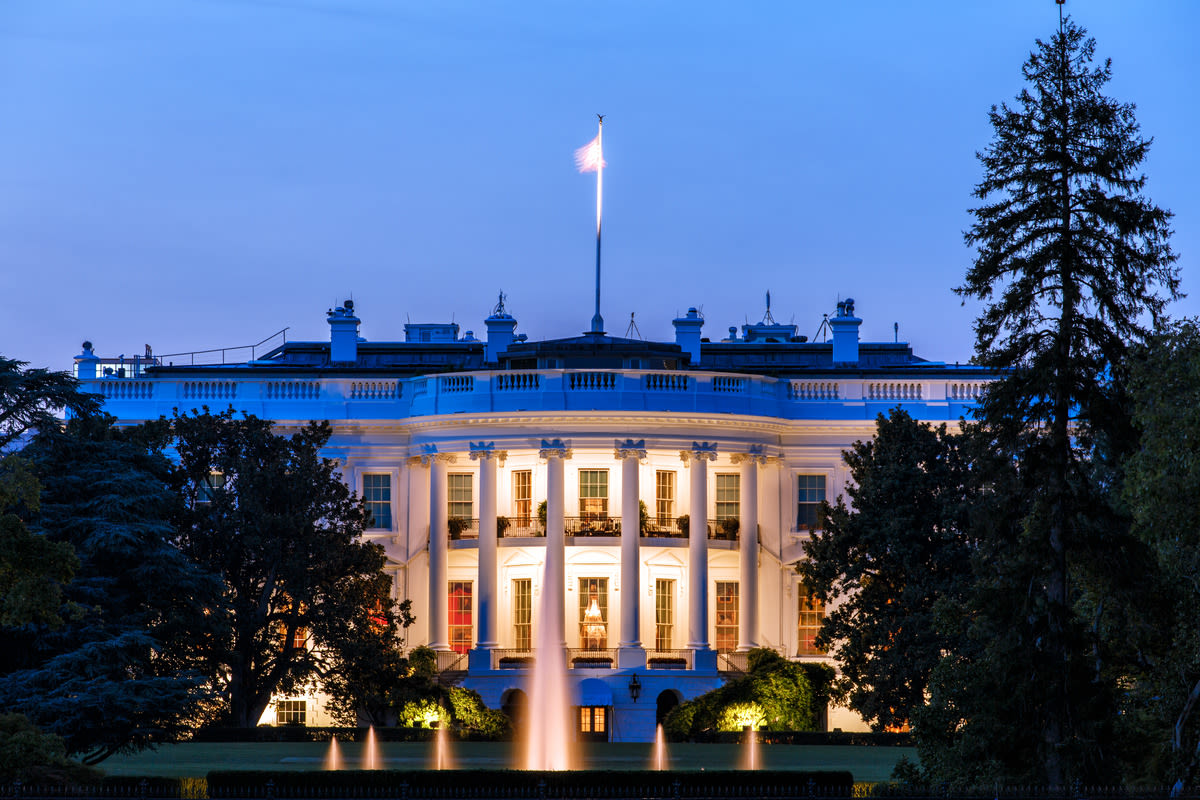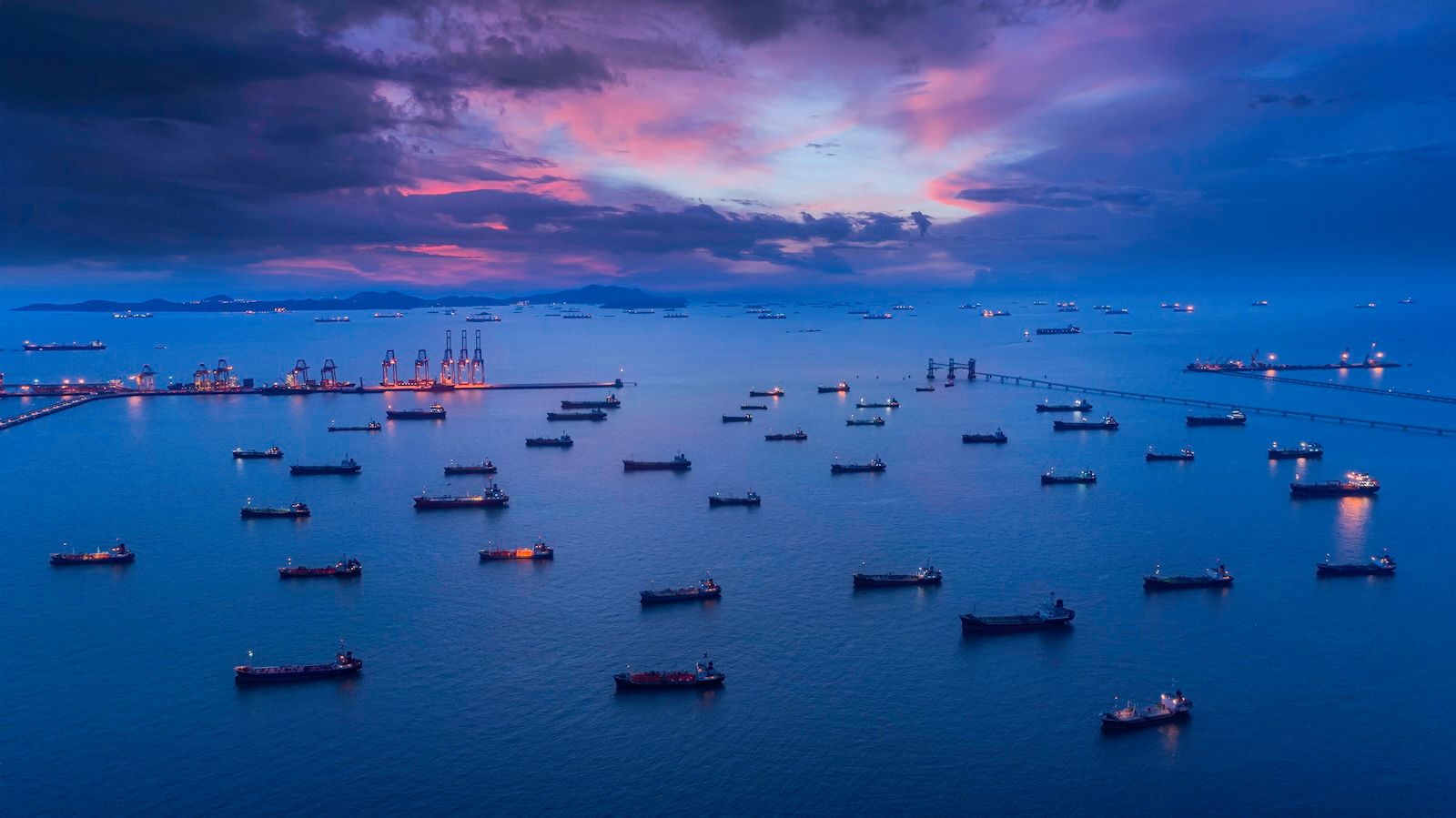
Global Logistics Update
U.S. Expands Steel and Aluminum Tariffs; European Destination Ports Face Peak Season Congestion
Updates from the global supply chain and logistics world | August 21, 2025
Global Logistics Update: August 21, 2025

August 21, 2025
Trends to Watch
Talking Tariffs
- U.S. Expands Scope of Steel and Aluminum Tariffs: On August 14, the Trump administration announced that it would add 407 Harmonized Tariff Schedule (HTS) codes to its list of “derivative” products subject to steel and aluminum duties under Section 232. The expanded scope took effect on August 18.
- U.S. trade partners currently face a 50% steel and aluminum tariff, except for the U.K., which remains subject to a 25% duty rate.
- These duties will be assessed only on the value of the product’s steel or aluminum content, while non-steel and non-aluminum content will remain subject to reciprocal or other applicable tariffs.
- Key product categories impacted by the expanded scope include consumer packaged goods, household and industrial products, heavy industry and transport-related goods, chemicals and coatings, and energy and infrastructure products.
- Note that some products also fall into the Section 232 automotive category. Automotive tariffs (25%) are assessed on the full value of the product, while steel and aluminum tariffs (50%) apply only to the product’s metal content. Additionally, goods subject to Section 232 auto tariffs remain exempt from steel and aluminum tariffs.
- Among the new additions to the expanded scope, 124 codes are flagged as both aluminum and steel derivatives. This means that importers must now declare which metal is present, even if the product contains only one.
- To ensure compliance, importers should obtain detailed supplier data, including the weight of steel/aluminum, percentage of customs value, and country of cast and smelt.
- Many brands are likely to face higher landed costs and operational complexities. Calculate and analyze these landed cost impacts in real time with the Flexport Tariff Simulator.
- For detailed implications for importers, check out our live blog.
- Other Recent and Upcoming Trade Developments:
- Per President Trump’s August 6 executive order, India will be subject to an additional 25% blanket duty starting next Wednesday (August 27), on top of an existing 25% reciprocal tariff. Depending on shipment departure and arrival dates, some Indian-origin goods will face an effective tariff rate of 50%.
- The de minimis exemption is set to expire for all countries next Friday (August 29), at which point low-value goods (i.e., shipments valued at or under $800) will face applicable duties based on their country of origin. For details on how these duties will be assessed, visit our live blog.
- Per President Trump’s August 11 executive order, the temporary U.S.-China tariff agreement that was initially implemented on May 14 will remain in effect until November 10.
- Earlier this month, President Trump announced plans to impose a potential 100% duty on semiconductors, along with possible pharmaceutical levies. He has not indicated a timeline for implementation.
- President Trump’s modified country-specific reciprocal tariffs took effect on August 7. Any nation not listed in President Trump’s July 31 executive order is subject to a 10% baseline reciprocal tariff, with the exception of China and Canada. Check out our live blog for more, including details on reciprocal in-transit exception eligibility and transshipments.
- IEEPA “fentanyl” tariffs on Canadian goods increased from 25% to 35% on August 1. Exemptions for USMCA-compliant goods and the previous tariff stacking order remain unchanged.
Ocean
TRANS-PACIFIC EASTBOUND (TPEB)
- Capacity and Demand:
- Market demand in August remains flat, with Southeast Asia ports continuing to post higher total loadings than China ports. Following the recent U.S.-China tariff truce extension, no dramatic changes have been forecasted for September.
- According to data released by the Port of Los Angeles last week, the port’s July container volumes reached record levels: 1,019,837 TEUs in shipments processed, and 543,728,000 TEUs in imports. These numbers reflect months of tariff-related frontloading, which has resulted in an earlier peak season than normal this year. Since June, spot rates between Shanghai and the U.S. have seen a significant decline.
- Capacity is at 70-80% of normal levels. Despite these reductions, the market is still experiencing overcapacity compared to overall demand. Space availability for shipments remains open.
- Section 301, Chinese-built vessels: Carriers recently stated that vessel deployments are ongoing or complete, but no related surcharges have been announced.
- Equipment:
- Equipment availability has improved slightly since late July. Equipment shortages remain a primary concern for carriers like CMA and HMM, while other carriers are experiencing better conditions.
- Freight Rates:
- Freight rates have been mitigated for inland and East Coast locations. The Peak Season Surcharge (PSS) was removed from the fixed market for the month of August.
- Carriers have announced a September 1 General Rate Increase (GRI). We will continue to monitor the rate situation, as the outlook for demand has remained stable, with no forecasted upsurge into September.
FAR EAST WESTBOUND (FEWB)
- Capacity and Demand:
- Blank sailings: Three Ocean Alliance (OA) and two Premier Alliance (PA) blanks have been recorded for late August (Weeks 34 and 35). Additionally, PA has announced three blank sailings for September (Weeks 36-38).
- Market demand has softened, while space and equipment availability have seen significant improvements at ports of loading.
- Due to the arrival of peak season cargo, destination port congestion has re-emerged. Main EU port terminal utilization has increased, potentially delaying inland transport and vessel berthing efficiency.
- Key yard utilization rates: Rotterdam, 75-85%; Southampton, 90-95%; Hamburg, 75-80%.
- Freight Rates:
- In its third week of continuous decline, the Shanghai Containerized Freight Index (SCFI) has fallen to $1,820/TEU in Week 34—a 12% drop since late July. In response, major carriers have reduced Freight All Kinds (FAK) rates by 10-15% to stimulate demand.
- Despite the softening market, weekly capacity deployment for September is estimated to remain above 300,000 TEUs. If demand continues to weaken, expect further rate reductions.
- Historically, the decline of FEWB freight rates has begun between late August and early September, and will last until Golden Week.
TRANS-ATLANTIC WESTBOUND (TAWB)
- Capacity and Demand:
- Antwerp: Heavy congestion continues, with yard utilization exceeding 90% and dwell times at approximately seven days.
- Rotterdam, Hamburg, and Bremerhaven: Ports are continuing to see yard utilization at 85–88%, and vessel delays of three to five days.
- South Mediterranean (Piraeus, Genoa, Valencia): Heavy congestion continues, with vessel delays of three to six days.
- Equipment:
- Shortages persist in Austria, Slovakia, Hungary, Southern/Eastern Germany, and Portugal.
- Freight Rates:
- PSSs in North Europe and the West Mediterranean have been postponed until late Q3, while East Mediterranean GRIs are expected in early September.
INDIAN SUBCONTINENT TO NORTH AMERICA
- Capacity and Demand:
- Capacity to the U.S. East Coast remains steady into the back half of August, with only two blank sailings announced for the month in total for the major Northwest India to U.S. East Coast corridor.
- Capacity to the U.S. West Coast remains widely available, given the continued oversupply impacting major TPEB services that move cargo from the Indian subcontinent to the U.S. West Coast. Some feeder services are seeing high utilization on pockets that connect to main TPEB services.
- Freight Rates:
- Rate levels to the U.S. East Coast are decreasing into the second half of August.
- Oversupply has drastically reduced rate levels to the U.S. West Coast in August.
- Exports from Pakistan continue to see elevated costs and transit times due to additional feeder services needed to service the country in light of the India-Pakistan conflict.
- As the additional 25% duty on India looms ahead on August 27, cargo demand is uncertain.
Air
WEEK 33: AUGUST 11 - AUGUST 17, 2025
- North China to the U.S.: Following last week's disruptions due to volcanic activity, the market is stabilizing this week.
- South China: Both traditional and ecommerce demand have decreased, reversing last week's trend.
- Taiwan: After the spike earlier this month ahead of new tariffs being implemented on August 7, the market has opened up.
- Vietnam: Vietnam is currently the only tight market, with carriers reporting limited connections from their main hubs. Compounding factors lie ahead, including certain big tech companies heading into their New Product Introduction season.
- Malaysia: Slight congestion and rate increases were observed on the TPEB in the aftermath of the most recent typhoon, while the FEWB remained stable.
- Thailand: After a local holiday in Week 33, the market is slowly re-opening in Week 34.
(Source: Flexport)
Please reach out to your account representative for details on any impacts to your shipments.
North America Vessel Dwell Times

Webinars
Tariff Trends 2025: Expert Insights on the New U.S. Customs Landscape (Section 232 Focus)
Watch On-Demand
Tariff Trends 2025: Navigating the End of De Minimis
Wednesday, August 27 @ 8:00 am PT / 11:00 am ET / 16:00 BST / 17:00 CEST
Ocean Timeliness Indicator
Transit times from China to the U.S. West Coast, North Europe, and the U.S. East Coast all experienced reductions, with the most significant decrease observed on the U.S. East Coast route.
Week to August 18, 2025
Transit time from China to the U.S. West Coast decreased by 0.4 days, falling from 33.6 to 33.2 days. The China to North Europe route saw a 1.2-day decrease, moving from 59.2 to 58 days. Lastly, the transit time from China to the U.S. East Coast decreased by 2.2 days, falling from 59.1 to 56.9 days.

See the full report and read about our methodology here.
About the Author

August 21, 2025
Related content
Ready to get started?
Learn how Flexport’s supply chain solutions can help you capture greater opportunities.






